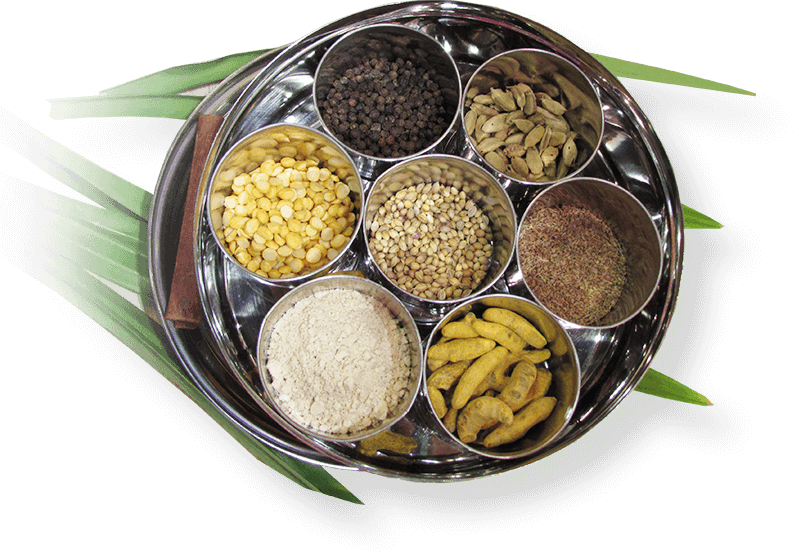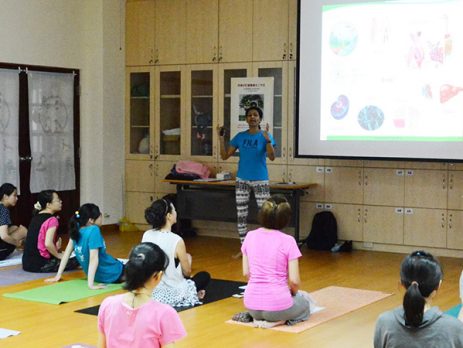Certification Program
- Home
- Certification Program
- AYPF (Ayurvedic Yoga Philosophy Foundation)
Ayurvedic Yoga Philosophy Foundation (AYPF)
ayurvedic yoga Philosophy Foundation (AYPF)
Learn the wisdom of ayurveda and yoga
Language : English with Chinese Translation
Theory/Lecture sessions for Yoga Students and Teachers
Certificate of Attendance by Ayurveda Association of Singapore (AAOS)
Imbue yourself with the wisdom of yoga philosophy. According to ayurveda and yoga, our potential power is from within and aligning to one’s True Self (atma) or consciousness will be the launching pad for utilising the inner power.
No yoga class is complete without an understanding of yoga and ayurveda philosophies. Many yoga students including yoga teachers are not aware of the true meaning of yoga. Many yoga students and even teachers are under the impression that yoga is asana (posture).
The central teaching of yoga is that everyone has their true potential within themselves. When the mind is scattered and constantly turned outwards, it depletes your energy. yoga is about harnessing your mental power and recognising your True Self thereby having access to your own innate power.
The ayurvedic yoga Philosophy Foundation (AYPF) class is a unique program designed by the Ayurveda Association of Singapore (AAOS) to add value to yoga teachers and students. You will have a deeper understanding of ayurveda and yoga and how to customise your yoga practice.
Course Outline and Structure
1. 8 Universal and timeless vedic principles
The backbone for all yoga teachers and students. According to ayurveda and yoga, our potential power is from within in the form of latent vibration (spanda). Aligning to your True Self (atma) or consciousness will awaken the latent power from within. The 8 universal principles imparts how to harness your inner potential.
2. Brief history of ayurveda and yoga
The main texts of yoga tradition (veda-s, upanishad, bagavad gita, patanjali yoga sutra, hatha yoga pradipika, shad darshana, charaka samhita, sushruta samhita and astanga hrdaya)
3. 4 stages of life (ashrama) and 4 goals of life (puruṣārtha)
According to ayurveda and yoga tradition everyone has 4 broad goals in life and go through 4 stages in life. Are these relevant in current times and how to modify our diet and lifestyle based on these principles.
4. Definitions of yoga and patanjali yoga
Yoga is a lifelong process and not a destination. It is a teaching handed out through tradition and systematised by sage patanjali into 196 short aphorisms (sutras). This systematic science about delving into your true potential and harnessing your mental power. It is not just asana.
5. astanga yoga
Also known as raja yoga, the 8 limbs of patanjali yoga can be broadly divided into external yoga (bahiranga yoga) and internal yoga (antaranga yoga). The path to systematic analysis and regulation of the mind using both the body and the mind.
6. yama and niyama
Ayurveda and yoga assert that physical health is dependent on mental well being and vice versa. Yama and niyama are the first steps towards the journey of yoga. Cultivating a mental attitude to ensure a steady and tranquil outlook to prepare the body and mind for yoga.
7. asana (steady pose)
A steady body allows for the mind to become steady. ayurveda and yoga regards the body as a vehicle for the atma. Health is a state where all dosha (vata, pitta, kapha) and agni are in balance. Asana-s should be performed the asana-s slowly and consciously thereby making it a mental exercise of concertation and preparing you for antaranga yoga.
8. pranayama and panchaprana (5 main prana-s) and 5 (upa prana)
pranayama is not the air we breathe or breathing exercise. prana sustains life Breathing is one of the tools used to harness the pancha prana within you . Know the difference between prana, pranayama and panchaprana. When prana is not practiced correctly it can cause imbalance to the dosha-s. some pranayama can increase the dosha and needs to be counter balanced.
9. The 5 sheaths (panchakosha) and the three “bodies” ( (sharira traya)
Ayurveda and yoga highlight the importance of the “seen” (physical body) and unseen (non physical “body” which includes the mind) and both are strongly integrated effecting one another. Traditional yoga is about recognising the interconnectedness of our physical and subtle being and using yoga as a tool to connect them.
10. pratyahara (sense withdrawal) for mental efficiency
Concentration is to bring the scattered mind to a focus. The 5 organs of actions (karmendriya) and 5 sense organs (jnanendriya) are by nature driven outwards. To bring the mind to a focus, mastering the senses are of absolute necessity. According to ayurveda, only when senses are mastered, can dosha-s be balanced.
11. antaranga yoga (Internal yoga)
Using the mind directly to handle the mind. The systematic process of first employing external yoga (bahiranga yoga) through yama, niyama, asana, pranayama and pratyahara to master the mind. The 2nd phase is through dharana, dhyana and samadhi – the 3 stages of concentration is crucial in cultivating the mind.
12. chakra and kundalini (benefits and dangers).
Using the mind directly to handle the mind. The systematic process of first employing external yoga (bahiranga yoga) through yama, niyama, asana, pranayama and pratyahara to master the mind. The 2nd phase is through dharana, dhyana and samadhi – the 3 stages of concentration is crucial in cultivating the mind.
13. antakarana (inner mental instruments)
The four functions of the mind (buddhi, chitta, ahamkara and manas) collectively known as antakarana. Understanding the difference between mind (manas) and intelligence (buddhi) and the workings of antakarana will provide you with clear thinking and mental insight.
14. sattva rajas tamas (mind quality)
The three inherent qualities of the mind (sattva rajas and tamas) that every yoga student must know. Train your conscious mind to allow sattva quality to guard your thinking process.
15. manasa roga (mind disease)
Ayurveda states that rajas and tamas are manasa dosha (can lead to disease) while sattva helps balance the dosha. The interconnectedness of vata, pitta and kapha and sattva rajas and tamas.
Dates: 19 – 20 June, 26 – 27 June, 10 – 11 July, 24 – 25 July, 31 July – 1, Aug, 21 – 22 Aug
Time: 9.30am to 11.30am




